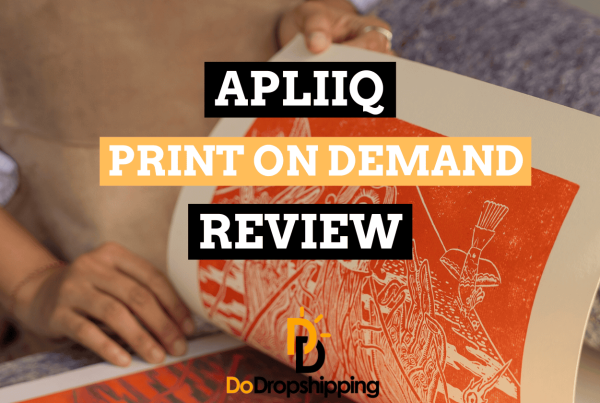Swimwear has always made waves—not just at the beach but also in fashion and pop culture. Thanks to beginner-friendly tools and flexible production methods, launching a swimwear line doesn’t require a massive budget or a fashion degree.
And now’s a good time to show up to this fashion pool party. The global swimwear market is expected to grow from $21.22B in 2024 to $22.04B in 2025. New brands with original designs and a clear brand identity have a real opportunity to enter the swimwear segment.
Wondering how to start a swimwear line? This guide walks you through everything from research and design to swimwear manufacturing, marketing strategy, and sales.
1. Research and define your audience
The first step in developing your swimsuit line is defining your target customer. Who do you want to sell to—just women (the main swimwear buyers) or the whole family? Why do your potential customers need a bathing suit—for leisure, competitive swimming, or performance sports?
Once you’ve figured out these core questions, dive deeper into market research and learn more about your target audience. Exploring their wants, needs, and pain points of swimwear shopping will help you identify the market gap and your possible competitive advantage.
Start by researching other successful swimwear brands in your desired niche. Use buyer reviews, bestseller lists on Etsy or Amazon, and trending posts on Instagram or TikTok to see key trends. Pay attention to complaints, questions, and common themes. These are gold for product and brand positioning.
If shoppers keep mentioning poor fit, limited sizes, or boring designs, those are product gaps you can fill. Use their complaints as your checklist to create a better swimwear line.

Based on these findings, determine what your target customers look for in swimwear—whether they have specific quality and design preferences, and what budget they would aim for. This will form a good foundation for developing your original swimwear brand.


@media (max-width:768px) {
.pf-btn-lg { height: 40px; line-height: 38px; min-width: 88px; font-size: 16px; }
}
2. Develop your brand identity
A strong brand is the key to driving sales and customer loyalty in the long term. So, once you’ve profiled your ideal customer and pinpointed your unique value proposition (USP), it’s time to give your swimwear brand an authentic voice and identity.
That includes a custom name, logo, and compelling brand values that resonate with your target audience.

Brand values
The core of any business is its mission and vision, or, in other words, the main values it stands for and the ultimate goals it wants to achieve. Showing that you’re here not just for profit but also to tackle a particular customer or societal issue can help you outperform the competition.
Crafting brand values isn’t that hard. Many brand owners start with causes they or their target audience feel strongly about. Take climate change, for example. You can integrate sustainability into your products by opting for recycled fabrics, eco-friendly materials, and a fair trade manufacturing process.
Be transparent: Report your practices, efforts, certifications, and anything else you do to make your brand sustainable. Don’t oversell either—go for specificity and honesty, not greenwashing.
If you’re just starting a clothing brand, you don’t need a lengthy manifesto to showcase your brand values. Your tagline or product descriptions are a good place to introduce your values, and they should reflect the real actions behind your brand.
Business name
Your business name is the first impression of your swimwear brand—make it count. The most successful business names are clear, relevant, and memorable, not just a mashup of initials. The best names hint at your style, purpose, or niche in the swimwear market.
You could look at your competition for common patterns or use business name generators like Namelix or Looka for ideas.
These AI-powered programs use your keywords to create several brand names. For example, list “beachwear,” “swimsuits,” “elegant,” “nature,” and any other keywords that relate to your future products.
Create a shortlist of business name options and check for trademark conflicts and domain availability before you commit. If your first choice is taken, experiment with variations that keep the tone and focus intact—clarity beats cleverness every time.
Brand logo
Strong fashion brands are recognized both by their name and logo. So, the next step in developing your swimwear line is creating a memorable logo that solidifies your brand message.
Start by thinking about your swimwear brand’s tone and your audience’s expectations. Is your swimsuit line designed for luxury vacations or laid-back beach days? Should your logo feel elegant or fun? These answers guide choices like font, color, and layout.
If you already have a clear vision and graphic design skills, sketch a few versions yourself. But if not, hire a freelance graphic designer to create a high-quality logo exactly as you want.
You can also use logo generators. Tools like Canva’s AI logo maker offer an easy way to explore different styles and ideas. Describe what your brand is about, add some visual pointers, and ask the tool to refine the designs until you get to a logo you like.

Ensure your logo works across digital and physical touchpoints—your website, social media, product labels, and packaging. A complex design might look cool on screen, but not translate well onto a swimsuit label or care tag. When finalizing your logo, save it in high-resolution vector formats like SVG or PDF to ensure it stays sharp on all surfaces and sizes.
3. Find your manufacturing partner
Starting your own swimwear collection from scratch can seem daunting, especially if you have no experience in the fashion business, design, or sewing. But today, flexible manufacturing options make it possible to launch a clothing line without this experience.
Working with experienced bulk manufacturers lets you create a swimwear line without technical know-how. The tradeoff? Higher upfront costs, large minimum order quantities, and longer lead times before you can sell.
A faster, lower-risk option is to use print-on-demand with a dropshipping partner like Printful. In that case, you can develop a custom swimwear brand without investing in inventory, managing logistics, or holding stock.
Pro tip: Learn more about how to start a swimwear line with print-on-demand in our guide How to Start a Dropshipping Clothing Business

Before you commit to a manufacturer, ask key questions:
-
What’s their sample policy?
-
Can they meet your quality expectations?
-
How responsive is their communication?
Look for partners who are transparent about timelines, pricing, and materials—and willing to provide product samples of swimwear styles before you scale.
4. Choose the best swimwear fabrics and models
Your fabric, fit, and designs set your collection apart in the swimwear market.
Looking at fabrics, most swimwear is made from polyester, nylon, or spandex, depending on the desired balance of stretch, durability, and comfort. Choose based on your customers’ needs: high-performance swimwear may need more stretch and compression (nylon or spandex), while leisure suits prioritizes softness and style (polyester blends).
When it comes to swimwear styles, it’s all about your customers’ preferences, but here are four staples you’ll usually find in any beachwear line.
One-piece swimsuit
The one-piece swimsuit is a versatile staple in any swimwear collection. It’s practical and appeals to customers who prefer more coverage and support. But it can also exude elegance and chic, accentuating the body shape.
While often seen as classic, one-pieces regularly trend on runways and social platforms, especially with cutouts or high-leg designs.
They work well with both solid colors and bold prints, and they’re ideal for themed or niche designs like bachelorette parties, holiday styles, or branded swimwear with custom text.

High-waisted bikini
High-waisted bikinis combine vintage style with modern comfort. They’re preferred by customers who adore the vintage look and prefer security over minimal tan lines.
This style pairs well with retro themes, bold prints, and floral designs—but it’s just as strong in a minimalist swimwear collection. It greatly accentuates abstract and floral prints and looks just as well with monochromatic designs.
You’ll benefit from including high-waisted bikinis in your swimwear line as they claim several spots among the top swimwear brands, showing popularity and demand across generations.

String bikini
String bikinis are minimal, adjustable, and consistently popular with beachgoers who prioritize tanning, flexibility, and bold style.
While primarily loved by younger audiences, string bikinis are a classic that’ll add a playful touch to your swimwear line. They work across various aesthetics—playful, sporty, or bold—and come in padded or non-padded options, with endless color and print combinations.
Pro tip: Consider offering string bikinis as part of a customizable set—tops and bottoms sold separately—so shoppers can mix and match.
Swim trunks
Swim trunks are the go-to swimwear choice for male customers—and a smart way to expand your swimwear line’s reach. It’s the most popular choice among men for comfort, functionality, and style versatility.
Design-wise, they work well with bright, colorful patterns and tropical motifs, but you can also include solids and custom prints to cater to a broader range of tastes. Offering custom options or themed variations helps you target niche audiences while keeping your core product versatile.
Rash guard
If your swimwear company targets sports enthusiasts, rash guards are a must-have in your clothing line. These long-sleeved and fitted tops provide coverage to protect the wearer from the sun, wind, sand, and other elements.
As a clothing item favored by surfers, rash guards are perfect for showcasing bold swimwear designs that stand out in action-packed environments. Their sporty appeal allows you to experiment with eye-catching colors, prints, and branding.
5. Design your swimwear line
Design is where your swimwear line starts to take shape. Think about what’s missing in existing designs—what kind of bathing suit fashion industry is missing, or what your target audience hasn’t seen yet. This is your chance to build a focused, standout collection from the ground up.
Now, it’s time to put these ideas on paper—combine them with your market research findings and design your own swimsuit collection. If you’re a fashion enthusiast, this is where your eye for detail and creativity will shine.
During the design process, consider the latest consumer trends in the fashion industry. The leading swimwear brands set the tone for other manufacturers. Pinterest, runway recaps, and even TikTok will help you spot design patterns, color trends, and product ideas with viral potential.
As with the brand logo, hire a graphic designer to transform your rough sketches into quality design files. You can also use the patterns and graphics provided by free tools like the Printful Design Maker to create your swimsuit designs in minutes.

Expect some trial and error. Don’t be discouraged if your first sample isn’t perfect. Focus on the fact that you’ve created a bikini line under your own label, monitor customer feedback, and keep trying until you’re satisfied. If you run your swimwear company with POD, you test designs without losing money on bulk pre-orders.
6. Create a marketing plan
By now, you should have a clear idea of how to start your own swimwear line. But swimwear manufacturing without a marketing plan won’t sell. Your marketing strategy should align with your goals, budget, and audience, so you’re not just posting randomly, but driving real results.
Key elements of planning marketing activities
The classic 4 Ps (product, price, place, promotion) form the basis of marketing efforts for your swimwear label. You already have your products designed. Now, time to set their price, define your distribution channels, and decide how you’ll promote your brand.
Price
Market research will help you establish the possible price range for your swimwear line. Consider whether you want your products to fall in the exclusive or more budget-friendly price category.
Use the Printful pricing guide to determine how much to charge to make a profit. Remember to include the production costs and leave room for potential platform markups and discounts.



@media (max-width:768px) {
.pf-btn-lg { height: 40px; line-height: 38px; min-width: 88px; font-size: 16px; }
}
Place
Your profitability will partially depend on your sales platform. Launching an online store is much faster and cheaper than a physical one and can reach global audiences.
Creating your own website with an online store integration is now easier than ever. You have several options, including Squarespace, Shopify, and WooCommerce. Another option is to sell on online marketplaces like Etsy or Amazon—you’ll have to give up some customization possibilities, but will gain access to a broader audience.
Pro tip: Learn more about selling successfully in online marketplaces in our guides: How to Sell on Etsy and How to Sell Print-on-Demand on Amazon.
If you decide to launch your own store, you’ll also need to register a domain name, for example, via GoDaddy. Ideally, keep it the same as your swimwear brand or add words like “store” or “shop” at the end.

Promotion
Whether you choose to sell swimwear on your website or online marketplaces (or combine both), you’ll need to invest in several online marketing activities.
Develop a strong social media presence to build brand recognition and boost a loyal following for your swimwear brand. Start with social platforms like Instagram, TikTok, and Facebook—choose the ones where your audience actually spends time.
Invest in real-life, high-quality visuals across all channels and post consistently to keep your followers engaged. Outline a simple social media content plan, so you know what and when to post on each platform and can prepare content in advance.
If you launch a website to sell your swimwear lines, optimize for search engines (SEO) before you start any campaigns. For example, you could create a blog section to add style guides and other inspiring content, making it easier for potential customers to find you.
In addition to regular, informational content, consider running paid ads on Google, social media, and online marketplaces to increase your reach.
Don’t forget about the good old email marketing campaigns either—they’re great for building customer loyalty and sending exclusive deals.
7. Start selling on Printful
Once you have a solid business plan and a marketing strategy, it’s time to make some actual sales.
Before you start any campaigns and promote your business, make sure all the key product and shipping information, like swimwear sizes, material, fabric, and delivery times, is clear and accessible. This helps ensure customer satisfaction and avoids confusion and unnecessary returns.
The real work begins when you’ve launched your store and made the first sales. Listen to what your customers say and use their feedback to improve your swimwear brand. Ask them about designs, fit, and quality to guide your touchups and spark fresh marketing ideas that resonate.
Remember that your most loyal customers often become your best brand ambassadors, sharing their positive experiences and organically bringing in new shoppers.
Conclusion: Should you start a swimwear line?
Swimwear is one of the most in-demand and trending products in fashion, offering plenty of opportunities for new brands to stand out. With production methods like print-on-demand, even small businesses can compete in this growing market.
Success comes when you do the work: research, create thoughtful swimwear designs, build a strong brand identity, and stay close to your customers.
Now that you know how to start a swimwear line, it’s time to take the first step in this exciting journey—ready to dive in?
Yes—swimwear has high perceived value, and customers are willing to pay for standout designs. While it’s a competitive market, a focused niche, strong branding, and smart marketing will turn your swimwear business into a profitable venture.”}},{“@type”:”Question”,”name”:”How much does it cost to start a swimwear line?”,”acceptedAnswer”:{“@type”:”Answer”,”text”:”
Startup costs in the swimwear industry range from a few hundred to several thousand dollars, depending on your approach. Print-on-demand services or small-batch production help reduce upfront investment because you don’t need to buy inventory in bulk.\n
\n
Aside from production expenses, other costs are sample orders, ecommerce platform subscriptions or marketplace fees, and a marketing budget.”}},{“@type”:”Question”,”name”:”What is the profit margin on swimwear?”,”acceptedAnswer”:{“@type”:”Answer”,”text”:”
Typical swimwear profit margins range 30%–70%, depending on your pricing strategy and production method. If you use print-on-demand to launch your swimwear business, your margins may be slightly lower than with bulk manufacturing. However, the reduced risk and zero inventory costs balance it out. You can also test and adjust your pricing as you learn more about your customers’ needs and preferences.”}}]}
Frequently asked questions
Yes—swimwear has high perceived value, and customers are willing to pay for standout designs. While it’s a competitive market, a focused niche, strong branding, and smart marketing will turn your swimwear business into a profitable venture.
Startup costs in the swimwear industry range from a few hundred to several thousand dollars, depending on your approach. Print-on-demand services or small-batch production help reduce upfront investment because you don’t need to buy inventory in bulk.
Aside from production expenses, other costs are sample orders, ecommerce platform subscriptions or marketplace fees, and a marketing budget.
Typical swimwear profit margins range 30%–70%, depending on your pricing strategy and production method. If you use print-on-demand to launch your swimwear business, your margins may be slightly lower than with bulk manufacturing. However, the reduced risk and zero inventory costs balance it out. You can also test and adjust your pricing as you learn more about your customers’ needs and preferences.
Source link



